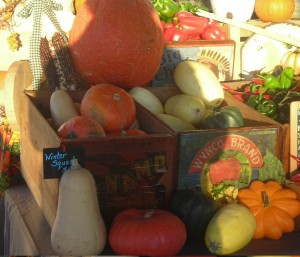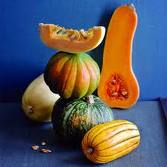
Our Selection of Winter Squashes
Winter squash is a warm-season vegetable that can be grown in most of the country. It differs from summer squash in that it is harvested and eaten in the mature fruit stage, when the seeds within have matured fully and the skin has hardened into a tough rind. When ripened to this stage, fruits of most varieties can be stored for use throughout the winter.
The squash family (Cucurbitaceae) includes pumpkins, summer squash and winter squash. They are really edible gourds. There are many varieties with a wide range of flavors and textures. Winter squash does not look the same either. Their tough outer shells can be smooth or bumpy, thin or thick and rock hard with a wide array of colors.
The most popular winter squash includes acorn, buttercup, butternut, calabaza, delicata, Hubbard, spaghetti, sweet dumpling, and Terk’s Turban. There are many more, but theses are the most common and the ones we try growing every year.
For storage, we harvest sturdy, heavy squashes with fairly glossy skin that is unblemished by soft spots, cuts, or breaks. Most winter squash benefits from a curing stage; the exceptions are acorn, sweet dumpling and delicata. Curing is simply holding the squash at room temperature (about 70 degrees) for 10 to 20 days. We have usually all ready done this before you purchase them.
After curing, transfer to a cool (45 to 50 degrees), dry place such as the basement or garage for long term storage. Careful, do not allow them to freeze. The large hard rind winter squash can be stored up to six months under these conditions. Warmer temperatures simply mean shorter storage time.

More Winter Squash
The smaller acorn and butternut do not store as well, only up to 3 months. Store cut pieces of winter squash in the refrigerator. Refrigeration is too humid for whole squash, and they will deteriorate quickly.
Check my web sight for some of my different winter squash recipes. I love cooking with these squashes and I’m sure you will too.
Tags: acorn squash, buttercup squash, Butternut Squash, hubbard squash, Spaghetti Squash


